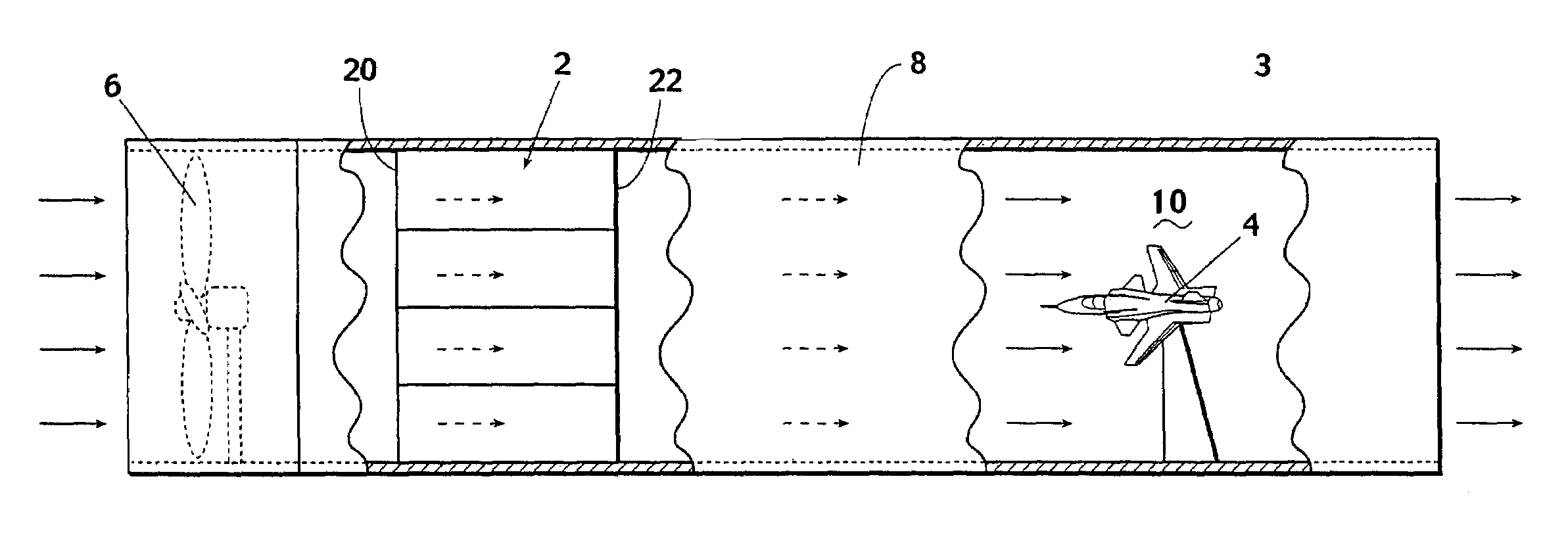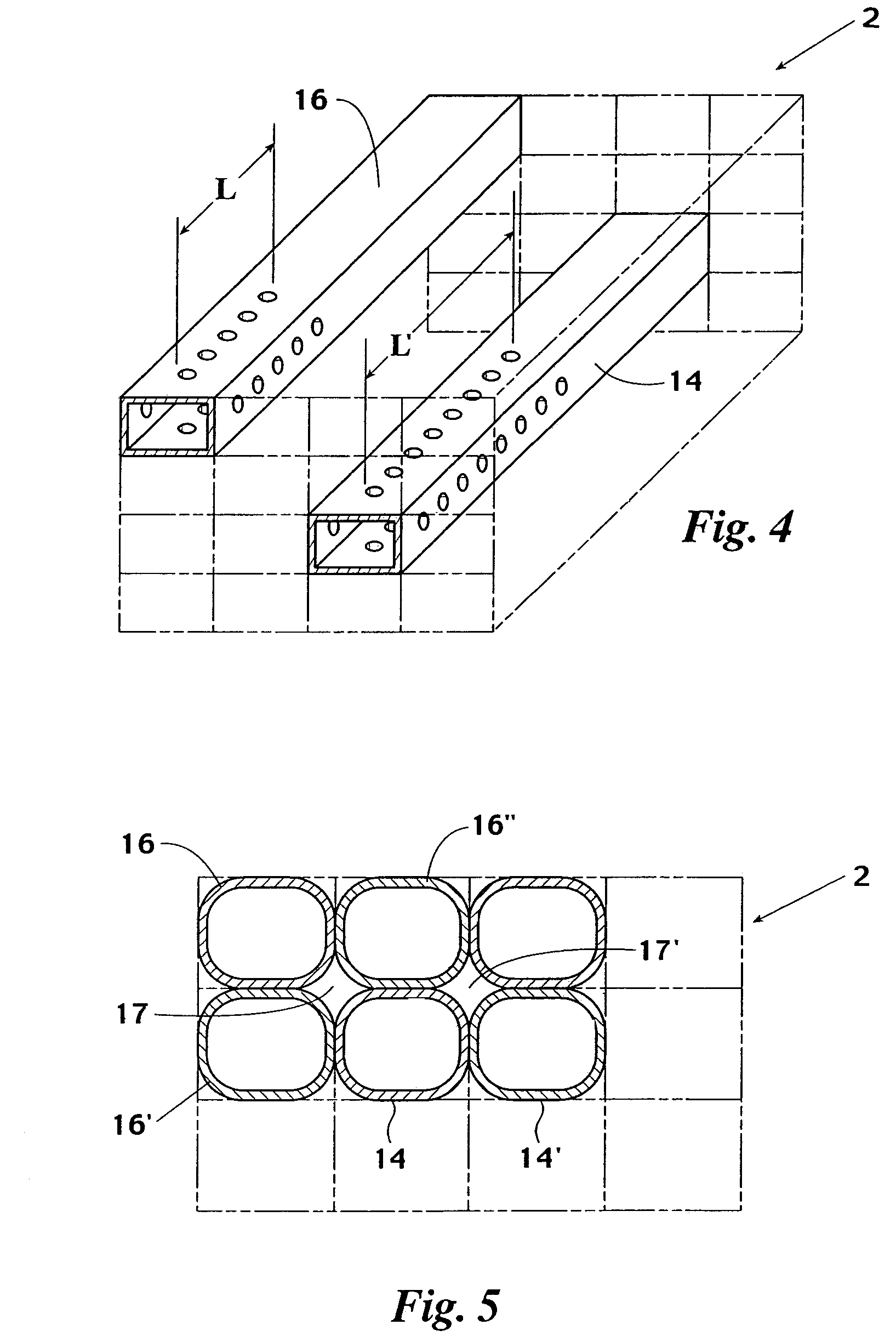Structure and method for improving flow uniformity and reducing turbulence
a technology of flow uniformity and flow velocity, applied in the field of fluid flow non-uniformity and turbulence control, can solve the problems of reducing flow uniformity, reducing flow uniformity, and reducing lateral turbulence, so as to reduce flow acoustics, reduce flow turbulence, and reduce lateral turbulen
- Summary
- Abstract
- Description
- Claims
- Application Information
AI Technical Summary
Benefits of technology
Problems solved by technology
Method used
Image
Examples
Embodiment Construction
[0021]In accordance with the aforementioned deficiencies in the prior art, a new structure has been designed and developed by the present inventor for alleviating the design dilemma between screen deformation and induced vorticity such that high quality fluid flows can be established. In addition, the present invention is well suited to efficient and cost-effective manufacture. Therefore, the present invention provides new possibilities not previously available to wind tunnel designers, as well as designers other various applications.
[0022]Referring now to FIG. 1, a preferred embodiment of the present invention in the form of a conduit bundle 2 for use in the stilling chamber of a wind tunnel 3 is shown. The conduit bundle 2 eliminates the need for a screen in the stilling chamber of the wind tunnel 3. The wind tunnel 3 would typically be used for testing the aerodynamic properties of a test subject 4 such as a jet. The wind tunnel 3 has an apparatus such as a fan 6 for passing air ...
PUM
 Login to View More
Login to View More Abstract
Description
Claims
Application Information
 Login to View More
Login to View More - R&D
- Intellectual Property
- Life Sciences
- Materials
- Tech Scout
- Unparalleled Data Quality
- Higher Quality Content
- 60% Fewer Hallucinations
Browse by: Latest US Patents, China's latest patents, Technical Efficacy Thesaurus, Application Domain, Technology Topic, Popular Technical Reports.
© 2025 PatSnap. All rights reserved.Legal|Privacy policy|Modern Slavery Act Transparency Statement|Sitemap|About US| Contact US: help@patsnap.com



